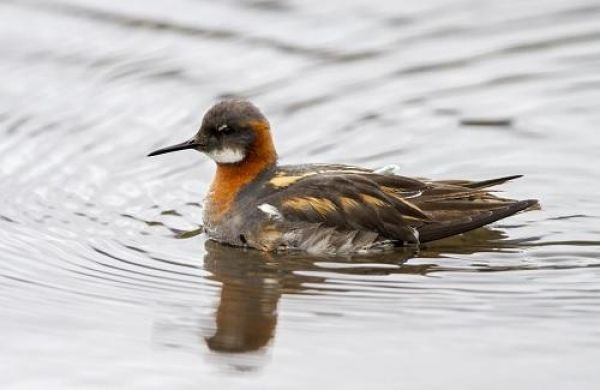When winter comes, populations of red-neck phalarope from the Western Palearctic migrate to two different destinations –the Pacific Ocean or the Arabian Sea- following an exceptional migratory divide strategy which has never been described in this geographical area. A part of these bird populations –which breed in Greenland, Island and the British Islands- cross more than 10,000 kilometres to reach the Pacific Ocean, while populations in Scandinavia and Russia go to the Arabian Sea in the Indian Ocean, more than 6,000 kilometres away from their breeding areas.
This migratory behaviour is now described for the first time in an article published in Frontiers in Ecology and Evolution –in which the researchers Raül Ramos and Jacob González-Solís, from the Faculty of Biology and the Biodiversity Research Institute of the UB (IRBio) take part.
An uncommon wintering species in the peninsula
The red-neck phalarope (Phalaropus lobatus) is a migratory bird from the family of phalaropes that live in the tundra and high polar latitudes during their reproduction season. These small shore birds spend a part of their annual cycle –mainly the wintering period- at open sea, and therefore they are regarded as pelagic birds. During the migratory routes after breeding season –from August to September- this species can be occasionally seen in peninsular areas such as the Ebro Delta or the Atlantic and the Cantabrian coasts.
Read more at University of Barcelona
Image: The results show the existence of a migratory divide with two defined populations of red-neck phalarope in the geography of the Western Palearctic. (Credit: Yann Kolbeinsson)


